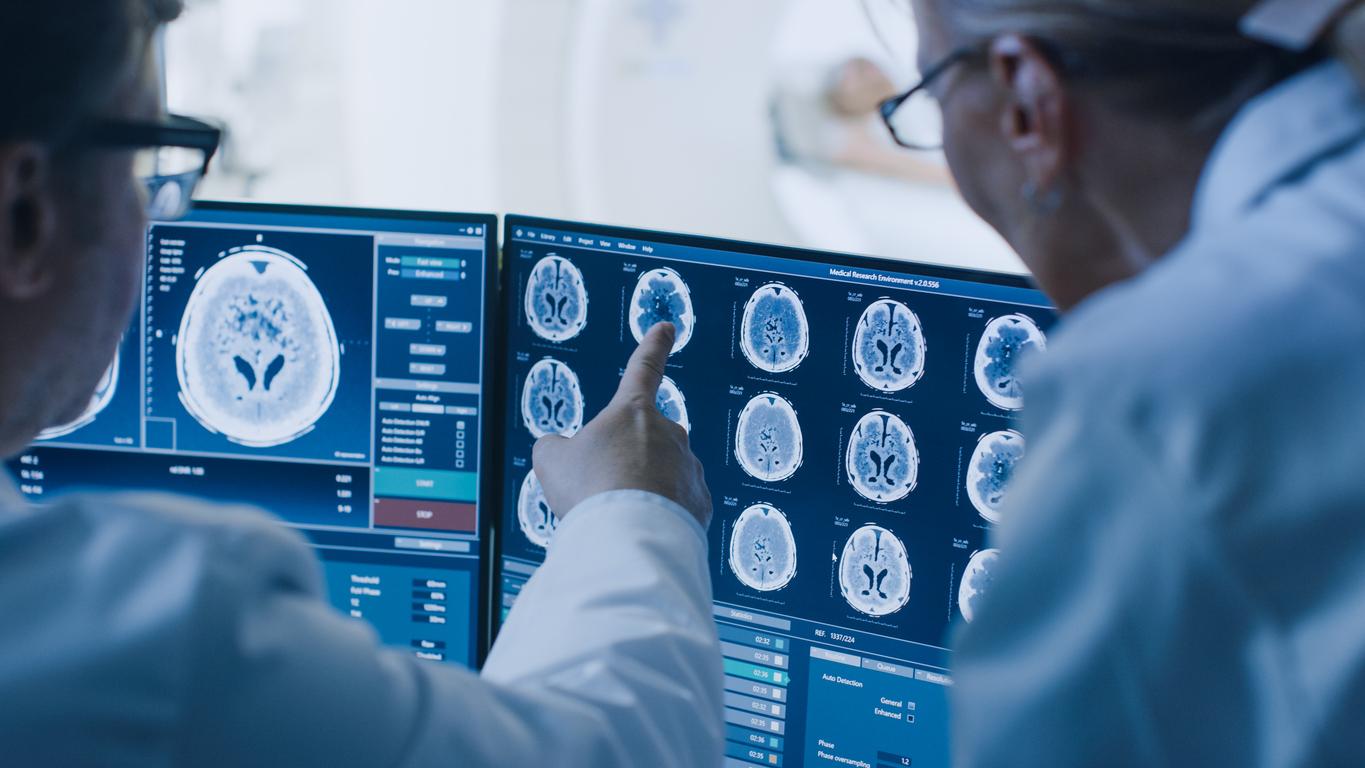Researchers have discovered how different groups of neurons share the processing of signals related to negative and positive information in mice. Ultimately, this could improve understanding of the brain of patients with mental disorders.

Roar in pain or pleasure? If we would all be more inclined to go for the second option, what mechanism engages in our brain to convince us to make such a decision? To try to answer this question, American researchers have studied the information processing centers in the cerebral cortex of mice. They thus identified how different groups of neurons share the processing of signals related to positive and negative information. The results of their research were published on Tuesday, December 31 in the journal Neuron. Ultimately, these discoveries could improve understanding of the brains of people with mental disorders.
Mice have two groups of neurons, located in an area of the brain called the ventral pallidum, which respectively send opposite signals to the brain circuit responsible for processing motivation. In order to understand their mechanism, researchers from the Cold Spring Harbor Laboratory (CSHL) trained animals to associate certain sounds with a sip of water (reward) or an unpleasant puff of air (punishment).
Then, using tools allowing them to monitor very precisely the activity of each cell of the brain, they observed that of the latter in different situations. They discovered that neurons using the neurotransmitter GABA to inhibit activity in the reward circuit were very active in motivating mice to seek water. On the contrary, neurons that use the neurotransmitter glutamate fired to avoid the air punishment.
Understanding whether this activity is disturbed in patients with mental disorders
The researchers then confronted the mice with more complex situations where they could receive both a punishment and a reward. There, the two sets of neurons reacted and the animals made different decisions in response to the combined stimuli. Those who were thirsty were more likely to risk a breath of air to drink than those who had just been given water.
On the other hand, if the researchers artificially shifted the balance of activity in the ventral palladium, the behavior of the animals was altered. Thus, the balance between signals that inhibit or excite neurons in this brain area appears to be critical in controlling an animal’s motivation, the researchers note. “The balance of activity between these two groups determines whether a mouse will seek out a pleasant experience or rather avoid a negative one, depending on the situation in which it finds itself,” explains the lead author of the study, the Professor Bo Li, in a press release published by the CSHL.
Now researchers want to understand whether this activity is disrupted in patients with psychiatric disorders. “Behavioral changes in people with depression or stress-induced anxiety may be caused by changes in this circuitry,” Bo Li continues. once provided pleasure, while patients with anxiety disorders will tend to go to greater lengths to avoid potential threats.
800,000 deaths by suicide every year worldwide
Depression is a common mental disorder that affects 300 million people worldwide, according to WHO. It differs from transient and occasional mood swings in its duration and intensity. It can then become a serious illness leading in the worst case to suicide (800,000 cases each year). And, despite various treatments existing to combat this affliction, less than half of the people affected in the world benefit from it. In question: a lack of resources, the shortage of caregivers, the social stigma associated with the disease and sometimes the difficulty in diagnosing it.
Anxiety disorders include various disorders related to excessive and difficult to manage anxiety. They can manifest as acute panic attacks or phobias. According to estimates, generalized anxiety disorder affects 2 to 6% of adults. As with depression, women are more affected.


.















